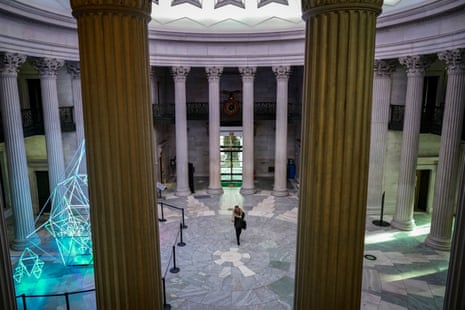The 35-day partial shutdown of the US government cost about $11bn and shaved 0.2% off the nation’s annual economic growth forecasts, the non-partisan Congressional Budget Office said on Monday.
The shutdown triggered by a fight over funding for Donald Trump’s proposed border wall with Mexico ended on Friday and was the longest in US history.
According to the CBO, the shutdown hurt economic growth because it affected roughly 800,000 workers and delayed federal spending on goods and services.
Much of the money will be recouped now the government is open again but the CBO calculates $3bn will never be recovered and the full impact of the closure – which left hundreds of thousands of federal workers and contractors without pay – may be larger.
The CBO warned “all of the estimated effects and their timing are subject to considerable uncertainty”.
The five-week shutdown delayed approximately $18bn in federal discretionary spending for compensation and purchases of goods and services and suspended some federal services.
As a result of the delay in wages and spending, the CBO expects the level of gross domestic product (GDP) – the broadest measure of economic growth – to fall by 0.2% in the first quarter of the year.
“CBO’s estimates do not incorporate other, more indirect negative effects of the shutdown, which are more difficult to quantify but were probably becoming more significant as it continued,” the report said. “For example, some businesses could not obtain federal permits and certifications, and others faced reduced access to loans provided by the federal government. Such factors were probably beginning to lead firms to postpone investment and hiring decisions.”
The impact of the shutdown may become clearer this week when the Federal Reserve meets to discuss interest rate policy and the latest jobs figures are released.
The Fed is not expected to raise rates after its meeting but its chair, Jerome Powell, will hold a press conference and is expected to comment on the impact of the shutdown.
On Friday the labor department releases its latest monthly jobs figures. The US has now added jobs for a record 99 months in a row. But the furloughing of so many workers may break that streak and the unemployment rate may rise.
